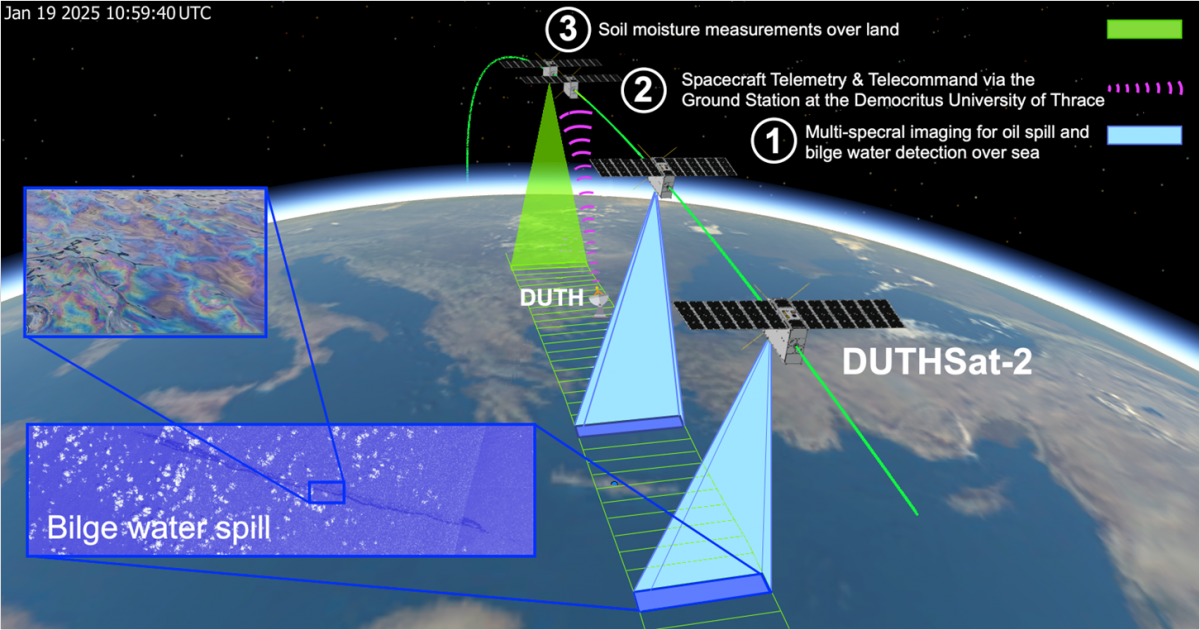Successful Launch of the First Greek Nanosatellite DUTHsat-2 with the Participation of Athena
27-06-2025

The first Greek nanosatellite, DUTHsat-2, was successfully placed into orbit on Monday, June 23, 2025, at 23:30 (local Greek time) via SpaceX’s Transponder-14 from the Vandenberg Space Force Base in California. The satellite is now in low Earth orbit (LEO) and represents the first mission of the national program “GR Cubesats In Orbit Validation”, implemented with the support of the European Space Agency (ESA). We are especially proud of the participation of the Space Program Unit of the Athena Research Center in this important mission, which marks a new chapter for the country in the field of space technologies.

The mission was developed under the coordination of the Democritus University of Thrace (DUTH), in collaboration with the Space Program Unit of the Athena Research Center and the Greek companies SPACE-ASICS and PRISMA Electronics. These entities were responsible for the design, construction, and assembly of the satellite, the flight testing and sun-synchronous orbit simulations (SS-RTGO), as well as the full coordination of launch procedures.
DUTHsat-2 carries instruments for acquiring multispectral images of the Aegean Sea, Eastern Macedonia, and Thrace, as well as an innovative Essential Telemetry Unit (ETM) for transmitting core telemetry data from its main subsystems—even in the event of a failure of the central onboard computer. A specific mission objective of DUTHsat-2 is the timely detection of illegal oil spills from passing ships through the analysis of multispectral imaging characteristics.
The successful launch of DUTHsat-2 is a historic milestone for Greek space technology, as it is the “first satellite flying the Greek flag,” as noted by the Minister of Digital Governance, Dimitris Papastergiou.
 The project's goal is to strengthen the country’s capabilities in Earth observation and secure space communication. More specifically, DUTHsat-2 will provide imagery and data that will be used to gather information about soil moisture and marine pollution. Additionally, the selected spectral frequencies and the camera’s resolution are designed to detect both oil leaks and pollution from ships’ ballast water discharges. At the same time, an in-flight demonstration of a new essential telemetry and status monitoring unit will be performed. The Essential Telemetry and Housekeeping (ETM) system is the space equivalent of a “black box,” allowing operators to monitor the satellite’s condition in case of failures in major subsystems.
The project's goal is to strengthen the country’s capabilities in Earth observation and secure space communication. More specifically, DUTHsat-2 will provide imagery and data that will be used to gather information about soil moisture and marine pollution. Additionally, the selected spectral frequencies and the camera’s resolution are designed to detect both oil leaks and pollution from ships’ ballast water discharges. At the same time, an in-flight demonstration of a new essential telemetry and status monitoring unit will be performed. The Essential Telemetry and Housekeeping (ETM) system is the space equivalent of a “black box,” allowing operators to monitor the satellite’s condition in case of failures in major subsystems.The mission is part of a comprehensive national strategy for utilizing space technologies in disaster response, environmental monitoring, and enhancing civil protection. The successful implementation of the DUTHsat-2 mission marks the beginning of a series of Greek microsatellite missions set to launch in the near future, further boosting the country’s operational and technological capabilities. Two more cubesats from Greek industry consortiums are scheduled to launch in November.
The National Microsatellite Program, implemented under the auspices of the Ministry of Digital Governance and funded by the Recovery and Resilience Facility, represents a strategic investment in innovation, sovereignty, resilience, and the country’s technological independence. It integrates the scientific human capital, Greek universities, and domestic industry, solidifying Greece’s position as an active member of European space policy.
